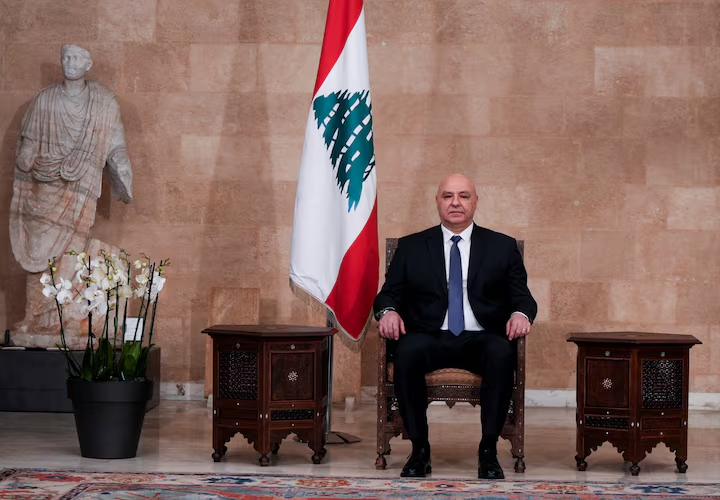
The Prime Minister nomination and government formation in Lebanon
By Ibrahim Jouhari
Following the election of the president, it is time to nominate a Prime Minister following government formation. Although Lebanon’s political system might seem complicated and archaic, there is a clear order for the next constitutional steps. This article will try to shed some light on the process.
Binding Consultations:
The first step will be for the President to call for binding consultations[1]. It is an election disguised under another term. All 128 new members of the new parliament will visit the President and cast their votes, naming a Sunni candidate as the next Prime Minister. The candidate with the most votes wins and becomes the Prime Minister-designate. It is a first-past-the-post type of election, where the candidate who gets one more vote than his second-place competitors wins, even if they both did not reach the absolute majority of the parliament (65 MPs).
Usually, the MPs visit the President for one or two days, starting with the former presidents and prime ministers, then the largest parliamentary blocks and coalitions, ending with the independent MPs. President Joseph Aoun has called for these consultations, which will happen Monday morning.
Government Formation:
In this second step, the newly elected PM and the President would meet and decide on the composition of the next government after the PM takes the non-binding input of the MPs and their political parties. This step is, unfortunately, also not bound by a time limit. In 2018, it took nine months, while PM Diab’s 2019 government took a relatively short 33 days.
This is a horse-trading exercise per excellence. Political parties, especially the largest ones represented by their leaders, meet, discuss, and trade political capital for different ministries and the patronage they award. This process embodies most of what is wrong in the Lebanese political system. With the new change MPs that entered the parliament, one can hope that the process will be different. It is also further complicated by the need for the approval of both the President and the Prime Minister and the support of a majority of political forces to ensure a successful vote of confidence.
Usually, the formation phase takes several months, but with the previous election of PM Hassan Diab and PM Mikati, a new trend was introduced, where most of the negotiation on the government composition occurs while the PM is being chosen. The process has been relatively rapid, and the discussions have not been as developed on the government as they usually are. Nevertheless, it is highly probable that the different candidates have already been making deals with the various political parties and dividing the ministerial positions among them.
Ministerial Statement:
Once the new government is formed, the political parties that compose it will establish a ministerial committee tasked with writing the ministerial statement. This is a general blueprint of the government’s central policies and focuses. Then, the Prime Minister-elect will present the ministerial statement to the parliament, and the MPs will discuss it. The process is televised and takes a few days of rowdy discussions in the parliament, ending with a vote of confidence[2]. Usually, most governments in Lebanon win these votes, as the political parties that hold the majority in parliament are already represented in the government, undermining the significance of this step.
After all these steps, the government can be considered legitimate and fully functional, and it can start meeting the urgent economic, financial, and humanitarian needs of this country.

In conclusion, it is hard to estimate the time government formation could take. Historically, it ranged from two months to almost a year. However, with Lebanon’s current challenges, and the current regional and international changes , this process might be faster than usual.
References:
[1] Article 53 of the Lebanese Constitution
- The President of the Republic presides over the Council of Ministers when he wishes without participating in voting.
- The President of the Republic shall designate the Prime Minister in consultation with the President of the Chamber of Deputies based on binding parliamentary consultations, the content of which he shall formally disclose to the latter.
- He alone shall issue the Decree which designates the Prime Minister.
- He shall issue, in agreement with the Prime Minister, the decree appointing the Cabinet and the decrees accepting the resignation of Ministers or their dismissal.
- He alone shall issue, the decrees accepting the resignation of the Cabinet or considering it resigned.
[2] Article 64 of the Lebanese Constitution
[the Prime Minister]
- He shall head the Council of Ministers and shall be ex officio Deputy Head of the Supreme Defense Council.
- He shall conduct the parliamentary consultations for forming the government. He shall sign, with the President of the Republic, the Decree of its formation. The government must present its general statement of policy to the Chamber to gain its confidence within thirty days of the date of issuance of the Decree in which the government was formed. The government shall not exercise its powers before it gains confidence nor after it has resigned or is considered resigned, except in the narrow sense of a caretaker government.
- He shall present the government’s general policy before the Chamber of Deputies.
